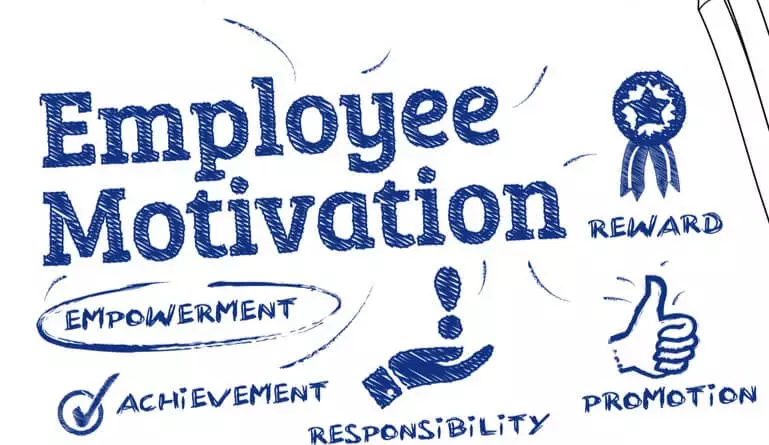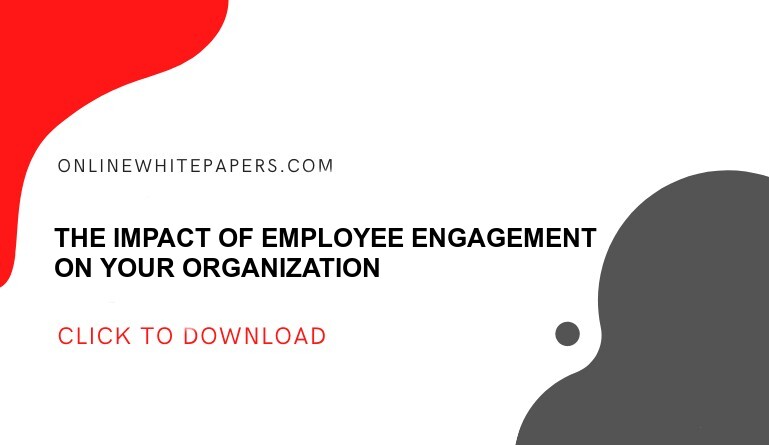It is difficult for managers to keep their employees motivated from time to time, but great managers know that employee motivation is essential to their success. The best way to ensure your employees stay motivated and engaged is by implementing certain strategies and techniques that can have major, lasting effects on motivation and productivity in the workplace.
Motivating your employees and getting positive employee engagement requires you to allow them to feel passionate about going to work every day and wanting to spend time with their colleagues.
Signs of Low Employee Engagement
Positive change is easier to achieve when your teams are motivated and excited. If your teams feel powerless, they cannot motivate themselves. This leads to a weak process culture.
Although every business is different, the signs of a weak process culture are similar. People spend their time troubleshooting problems and issues. There is little or no collaboration between teams. Attitudes are low, and implementations of process and change initiatives are infrequent.
Poor employee engagement and weak process cultures are usually caused by invisible leadership. It may be true that senior management believes in the value of process and improvement, but it doesn’t show support. It’s even worse if they verbally support the cause, but everyone knows it’s just lip service.
External experts can also undermine employee engagement by disenfranchising the people who are truly responsible for the process.
In addition, complexity affects employee engagement and negatively impacts growth, performance, and innovation. People feel overwhelmed in complex, unclear workplaces. Instead of working together to improve the business, teams retreat into silos and focus on just doing their jobs.
5 Ways to Motivate Employees Through Job Design
-
It should require a wide range of skills
A job requires a variety of skills and abilities. People don’t want monotony in their dream jobs; on the other hand, they want to have various skills throughout their careers, so they don’t get bored. It is more motivating for employees to have a variety of skills rather than relying on one set of skills all the time.
By partnering with other teams in your organization or through organized job shadowing opportunities, you can introduce a broader variety of skills to your roles.
-
Employees should identify with the task
In the context of a job, Task identity refers to the amount of time it takes to complete a specific piece of work from start to finish. Employees who identify with their tasks and see them through from beginning to end will be more likely to complete them if they are motivated.
You can motivate employees to complete their work by encouraging them to identify with it. A worker who contributes to several projects, but never sees the result, will identify less with their work, resulting in low employee motivation.
The task identity of many specialized jobs is low because employees are responsible for only one part of a larger project. To ensure completion, make sure their part of the larger project has a beginning and an end.
-
The job should be relevant to employees
Task significance refers to how important a job is to others within and outside the organization, and how it affects them. An employee’s sense of significance to the organization will motivate them to work hard, which in turn will increase employee productivity.
This will reduce employee engagement and your team will be less motivated to do their jobs if they feel that their work isn’t being noticed or isn’t having an impact.
A lack of appreciation is cited as a major reason for leaving by 79% of those who quit their jobs. Each role should be recognized as critical to the success of your business.
-
Individual autonomy
A measure of employee autonomy is the degree to which he or she can set his or her schedule. The ability to make decisions and have a flexible role appeals to employees.
If employees feel like they have no freedom or are micromanaged, their motivation will be lower. Autonomy can increase employee satisfaction and, as a result, productivity.
As employees’ success is dependent on their abilities and motivation, they feel more responsible for their efforts. It is possible to give any role more autonomy by encouraging individual responsibility and independence.
Your team will be more motivated and productive if you hand off responsibility. This may seem difficult if you run a tight ship historically.
-
Provide employee feedback
Performance feedback refers to how often an employee receives direct feedback on their performance. Providing feedback is essential to motivating employees in the long run. Employees need to receive feedback on their performance throughout their tenure, not just at a performance review annually or biannually.
Employees and managers should schedule regular one-on-one meetings to ensure a consistent channel for communication, including feedback about projects and performance.
Why Employee Motivation is Important
The importance of employee motivation can be attributed to several factors. This is because it helps management reach the company’s objectives. Businesses could be at risk if their workers are not motivated.
The benefits of employee motivation include:
-
Enhanced commitment:
Motivated employees are more likely to put their best effort into whatever task they are assigned.
-
Better satisfaction:
Every company should strive for employee satisfaction because this will lead to positive growth for the company.
-
Continual employee development:
Motivating the worker to reach his/her personal goals and facilitating one’s personal development is one of the benefits of motivation. The worker realizes the obvious link between effort and results once they reach some initial goals, which further motivates them to work hard.
-
Higher efficiency:
It is not just the employee’s skills or qualifications that determine his or her efficiency level. Getting the best results from an employee requires a balance between being able to do the task and being willing to do it. The result can be an increase in productivity and improved efficiency.
Final Thought
Be aware that you will need to adjust and change as you discover what works and what doesn’t to find the best motivators for your workplace.
It’s important to keep in mind that each company is different; some ideas might work for you, while others won’t.
Learn how to motivate the people in your company and they will reward you with greater dedication and a positive outlook for the company’s future. Employees who enjoy coming to work are a worthwhile investment.






